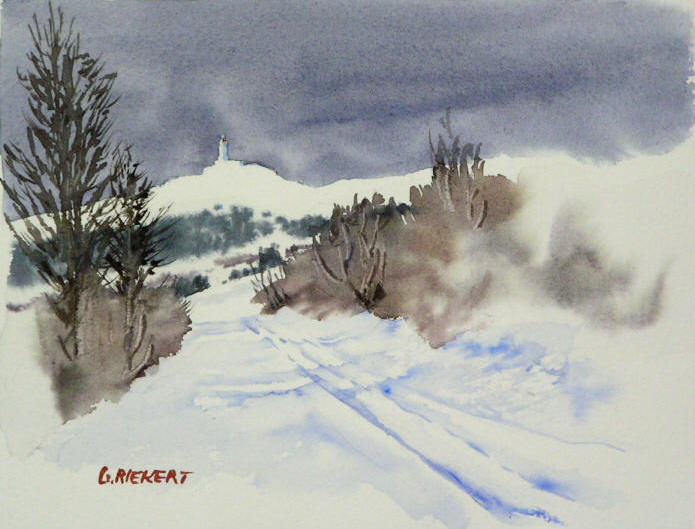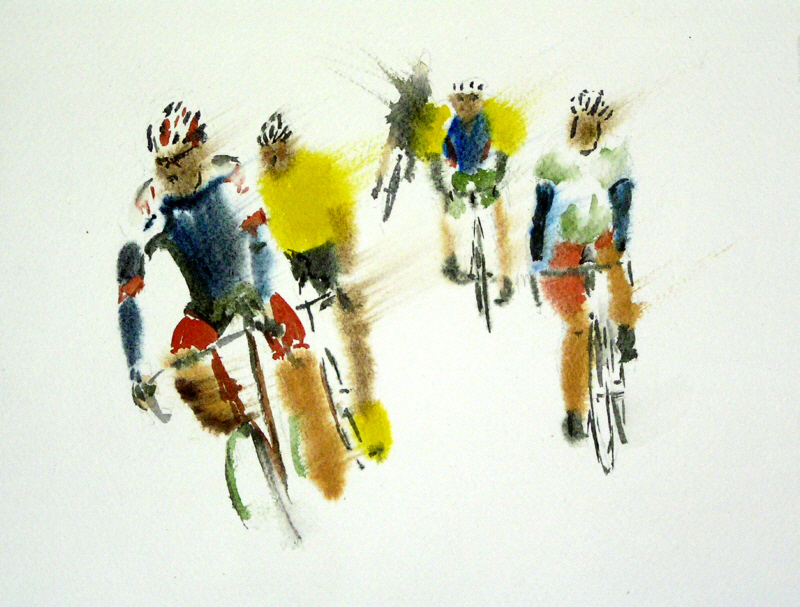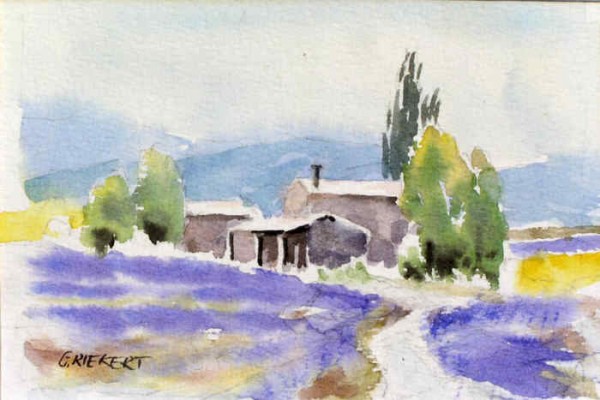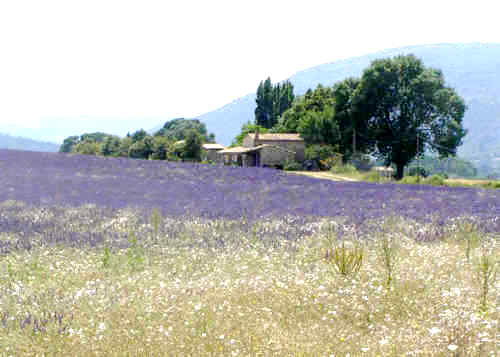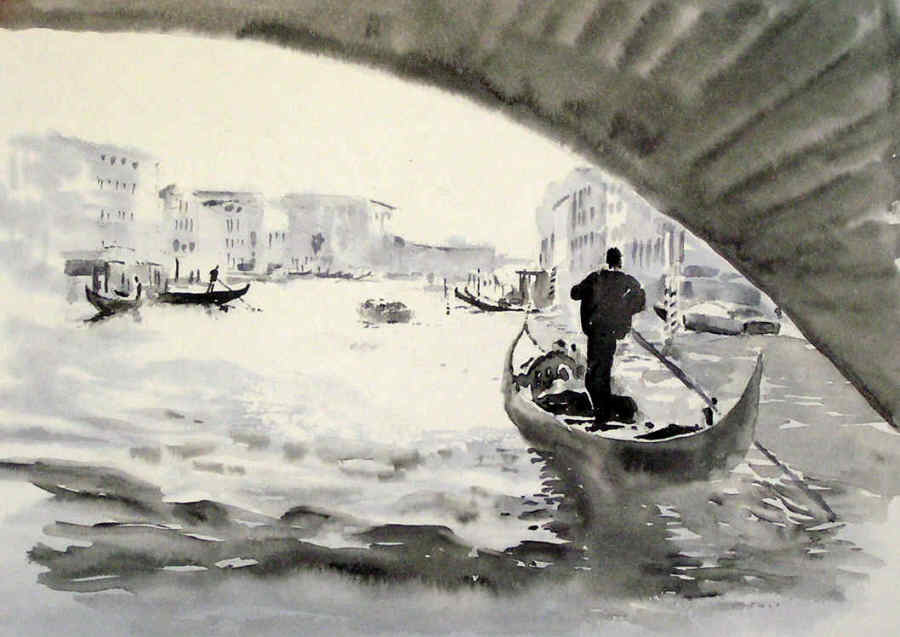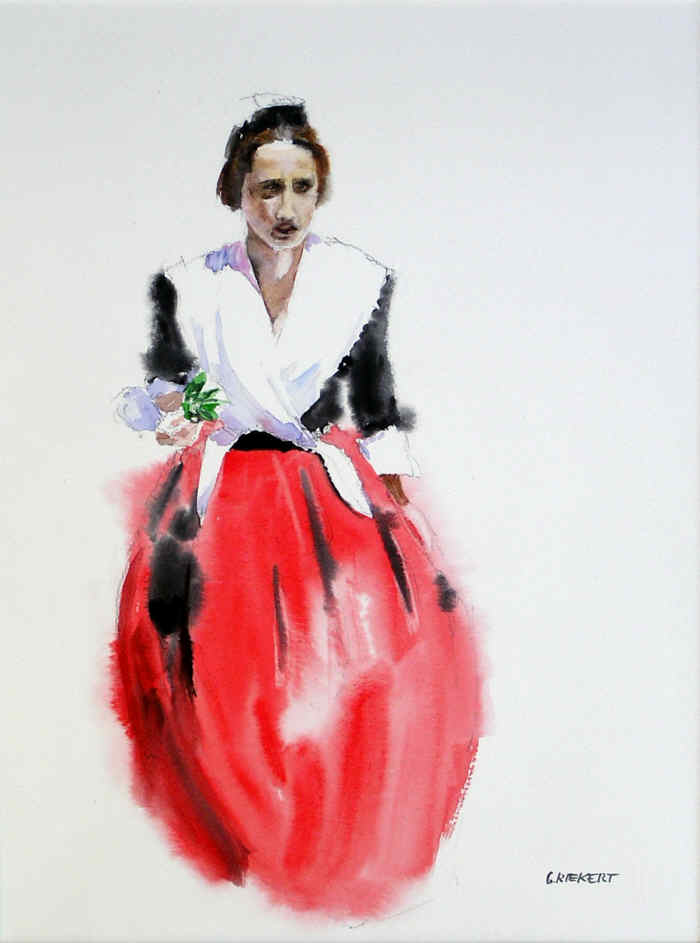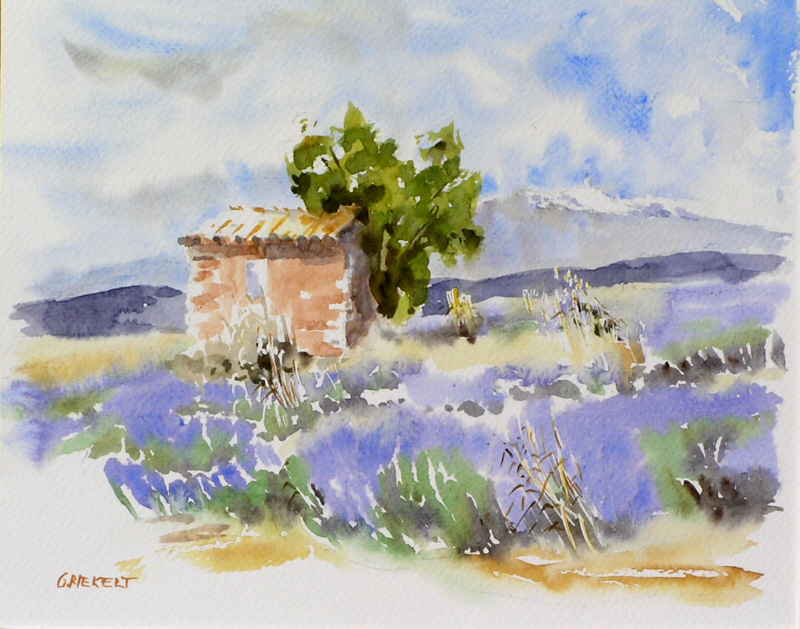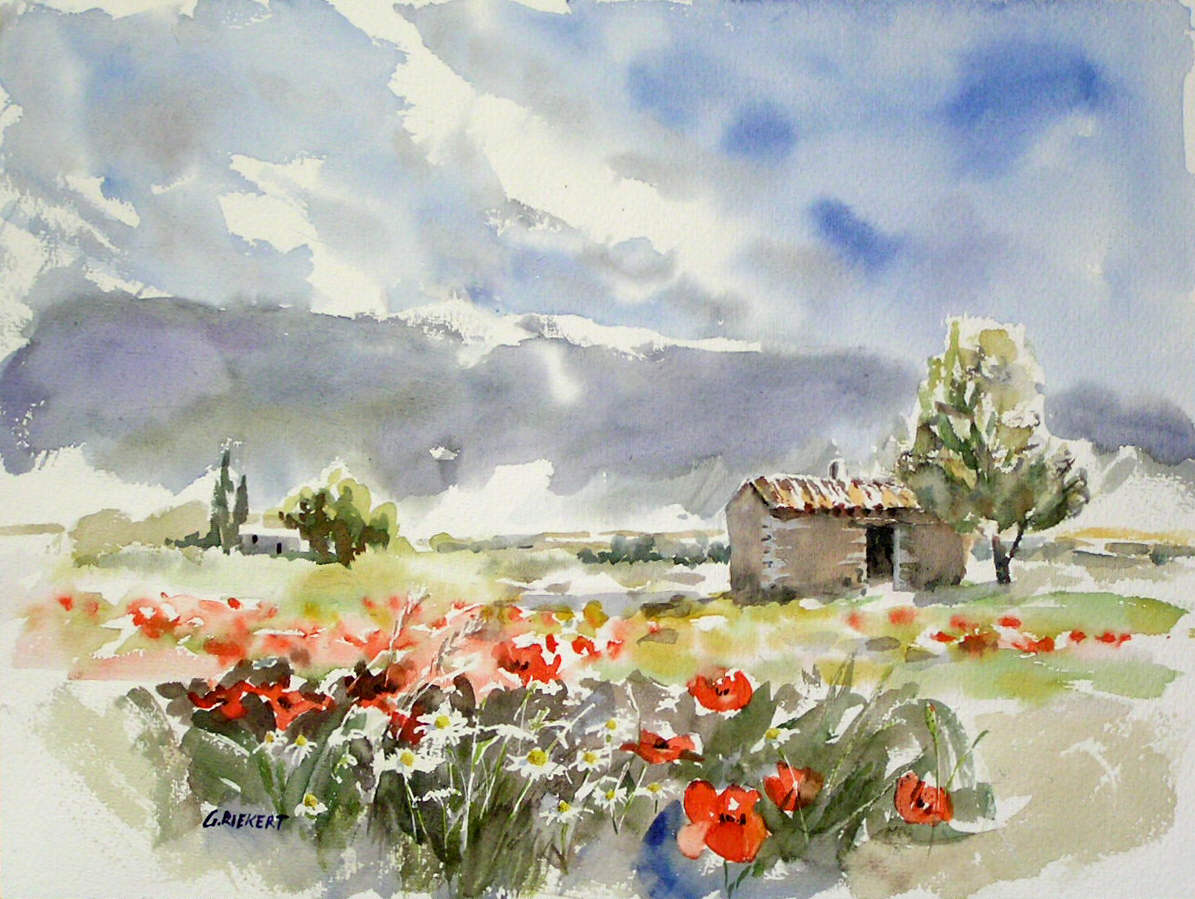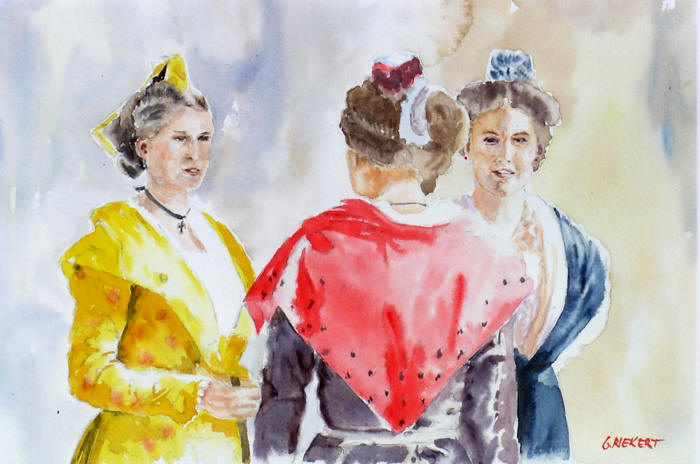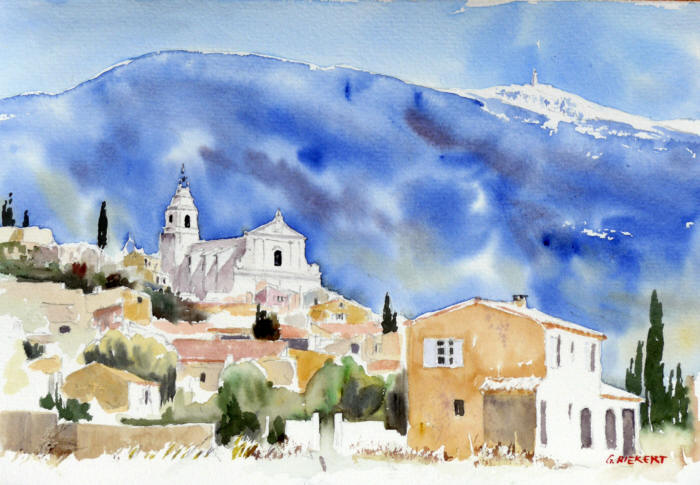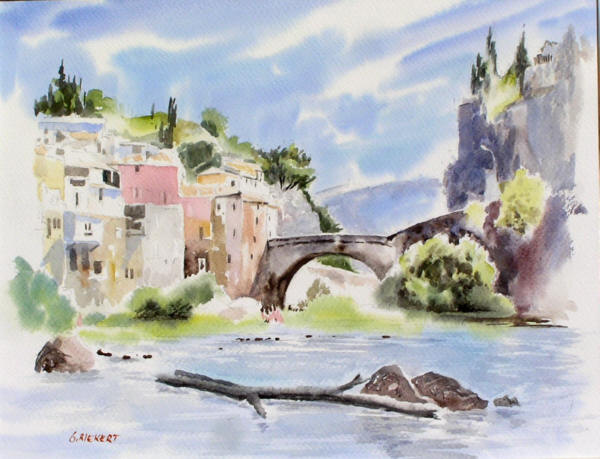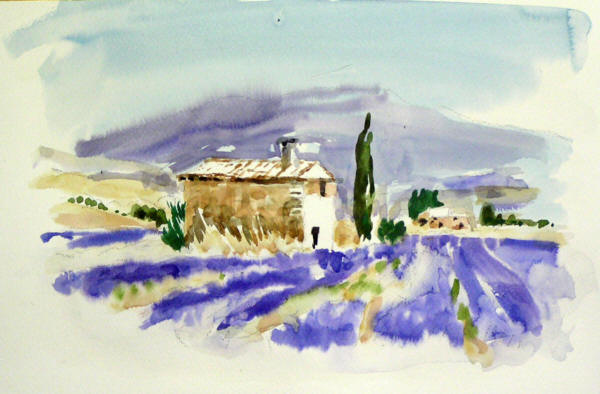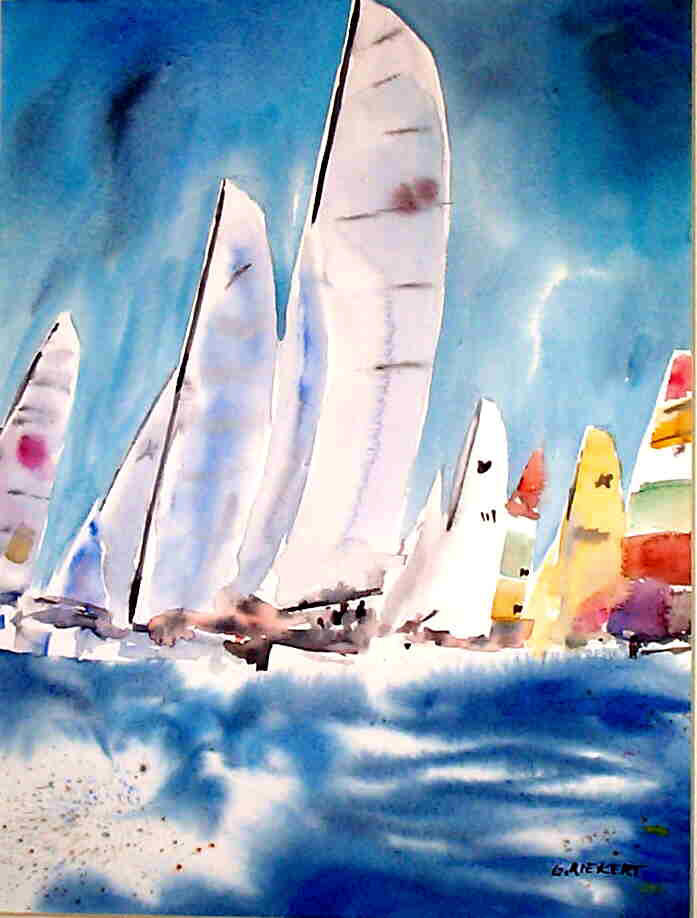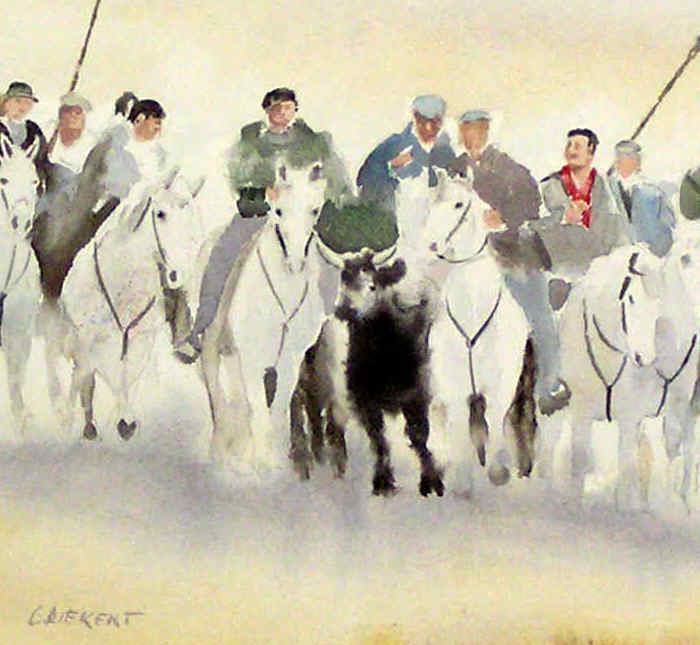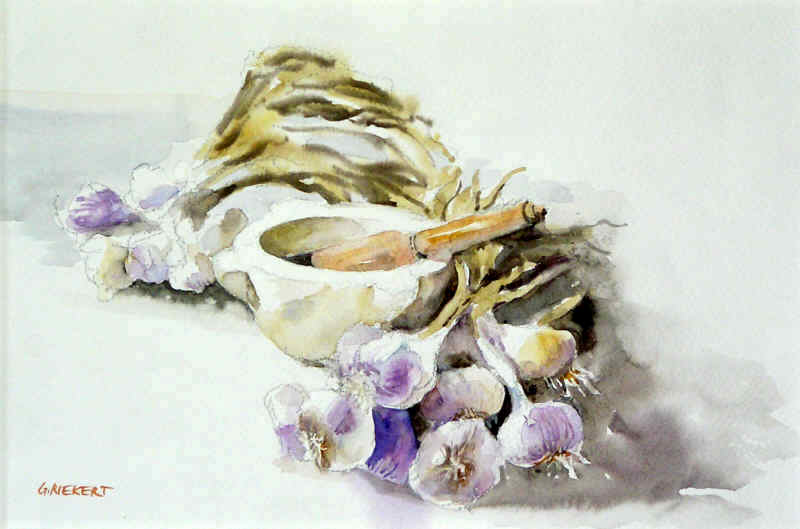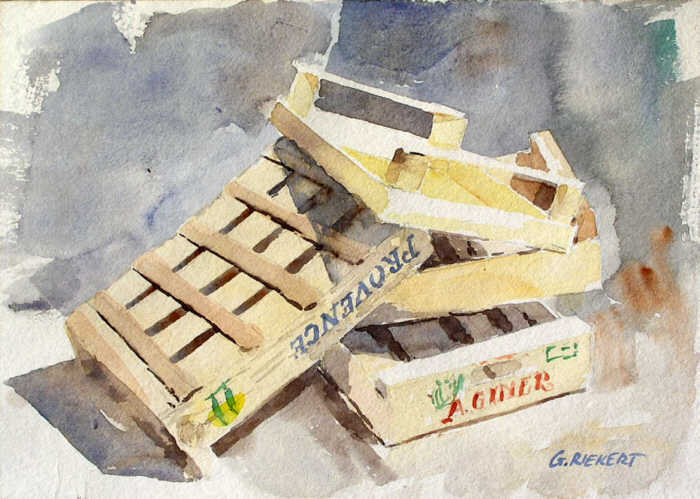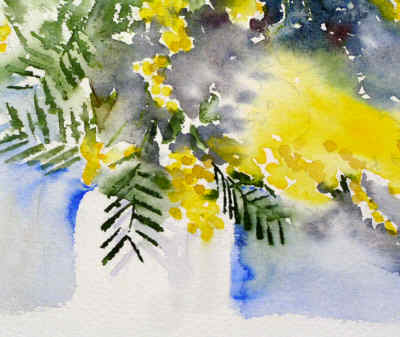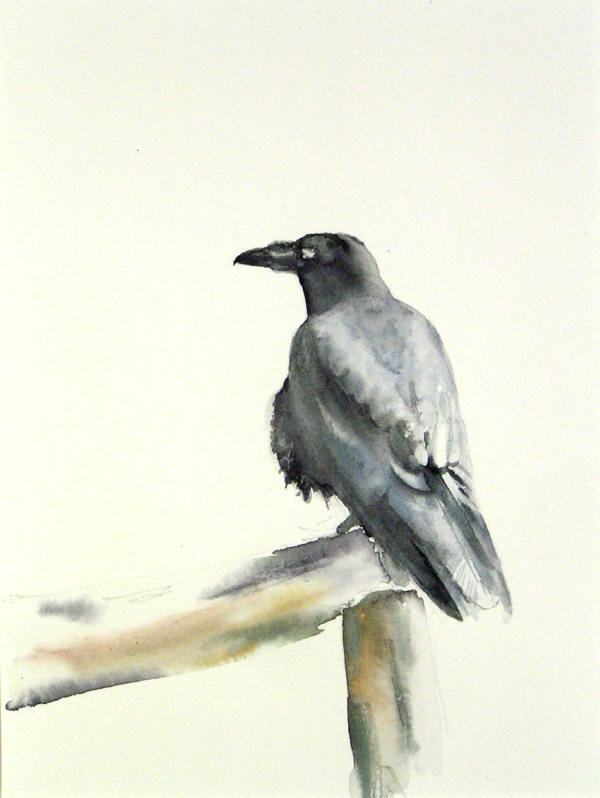Neige au Ventoux
16 December, 2012
Neige au Mont Ventoux – Snow on Mt. Ventoux – Schnee auf dem Berg
aquarelle, watercolor – Canson Fontenay 300 g/m², 15 x 20 cm
Couleurs
ciel: bleu de Delft, rouge indien
végétation distante: bleu de cobalt,vert émeraude, rouge indien
arbustes: rouge indien, rouge de cadmium
arbres nus: sépia, gris de Payne
ombres: bleu de cobalt, rose permanent
Colours
sky: Delftblue, Indian red
distant trees: colbalt blue, viridian, Indian red
bushes: Indian red, cadmium red
bald trees: Sepia, Payne’s grey
shadows: cobalt blue, permanent rose
Farben
Himmel: Delftblau, Caput mortuum
Vegetation im Hintergrund: Kobaltblau, Chromoxyd feurig, Caput mortuum
Büsche: Caput mortuum, Cadmiumrot
kahle Bäume: Sepia, Paynesgrau
Schatten: Kobaltblau, Permanentrosa
Cyclistes au Ventoux
21 February, 2012
aquarelle – watercolor, 24 x 30 cm, Fabriano 300 g/m²
– Il est temps de terminer l’hibernation (on a eu moins 14°C à Mormoiron) et préparer la saison pour les cyclistes, nombreux dans la région. Pour rendre la vitesse des coureurs il faut peindre sur un papier humide et ensuite étirer la couleur (n’attendez pas trop longtemps) avec une petite éponge ou un chiffon.
Rappel : structure horizontale ou verticale = statique
structure oblique ou diagonale = dynamique (mouvement).
– It is time to finish hibernation (we had minus 14 degrees centigrade in Mormoiron) and to prepare the season for the numerous bikers visiting our region. To render speed we paint on damp paper and wipe off the colour (don’t wait too long) with a sponge or towel.
Remember:
horizontal or vertical structure = static
oblique or diagonal structure = dynamic (motion).
– Allmählich wird es Zeit, den Winterschlaf zu beenden (wir hatten minus 14 Grad in Mormoiron) und die neue Saison für die zahlreichen Radfahrer vorzubereiten, die unsere Gegend besuchen. Um den Eindruck von Geschwindigkeit zu erzielen, malen wir auf feuchtem Papier und verwischen dann die Farbe (nicht zu lange warten) mit einem Schwämmchen oder Küchentuch.
Zum Erinnerung:
horizontale oder vertikale Struktur = statisch
schräge oder diagonale Struktur = dynamisch (Bewegung)
Interpretation
10 July, 2011
- Interpréter un sujet est la chose la plus importante dans la création d’une peinture. Copier ce qui est devant nous – en nature ou en photo – n’a jamais donné une bonne peinture. Et pourtant, si on veut exprimer l’émotion qu’on ressent il faut essayer de capter les plus de détails (ou d’informations) possible … en gardant finalement que l’essentiel.
- To interpret a subject is the most important thing when you are creating a painting. You never will get a good painting if you copy what you see (from life or photo). But if you want to transmit your emotion, try to register as many details (or information) as possible … to keep finally only the essential.
- Die Interpretation eines Motivs ist für mich das Wichtigste bei der Kreation eines Aquarells. Nur abzumalen, was man vor sich sieht – sei es nun nach der Natur oder vom Foto – hat noch nie ein gutes Bild ergeben. Und dennoch, will man das Gefühl ausdrücken, das man beim Betrachten empfindet, muss man versuchen, soviel Details (oder Informationen) wie möglich zu registrieren … um dann schließlich nur die wesentlichen zu verwenden.
Sous le pont du Rialto
30 March, 2011
aquarelle – watercolor “under the Rialto bridge”, Hahnemühle 275g/m², 30 x 40 cm
- Lier les formes est très important dans une peinture. Il y a plusieurs possibilités de le faire. Le plus direct et efficace est de les fondre une dans l’autre par des « contours perdus » (dans l’aquarelle la gondole est en fusion avec l’ombre sur l’eau). Une liaison peut être établie par la répétition des formes similaires (on retrouve la gondole plus loin, plus petit et dans un autre angle). Les mêmes valeurs tonales lie les formes (maisons dans l’arrière plan) et elles peuvent être liées avec la même couleur (c’est la raison pour laquelle une peinture monochrome ou à palette réduite possède une forte unité).
- Connecting shapes is an important element in a painting. There are several possibilities to do that. The most direct and efficient way is to create “lost edges” (in the picture gondola and shadow on the water are merged). A more indirect relationship is obtained by repetition of forms (we find the gondola again in smaller shape and seen at different angles). Shapes can be connected to each other by similar tonal values (houses in the background) or by similar colour (that’s why monochrome paintings or reduced palette paintings show strong unity)
- Die Verknüpfung von Formen ist für ein Bild sehr wichtig. Dafür gibt es mehrere Möglichkeiten. Die direkteste und wirksamste Methode ist die der „verlorenen Konturen“ (im Bildbeispiel sind die Gondel und der Schatten auf dem Wasser fusioniert). Eine eher indirekte Verbindung erhält man durch die Wiederholung von Formen (man findet die Gondel wieder, kleiner und unter einem anderen Winkel erscheinend). Formen können außerdem durch ähnliche Tonwerte verknüpft werden (Häuser im Hintergrund) oder durch gleiche Farben (das ist der Grund weshalb monochrome oder mit limitierter Palette gemalte Bilder eine starke Einheit aufweisen).
Comme modèle j’ai utilisé une photo du site veniceviews.co.uk (avec l’aimable autorisation de son éditeur John Kaye et du photographe John Hazard – hazzy.net).
Arlesienne
24 January, 2011
Arlesienne en costume, aquarelle – watercolor, Canson Montval 300 g/m², 30 x40cm
- Pour travailler à l’aise sur « Montval » de Canson il faut bien tremper le papier dans l’eau et le coller sur un support imperméable. Une peinture « mouillé dans mouillé » se fait ainsi sans problème.
- It is quite easy to paint on “Montval” paper (Canson): you have to soak it well and stick it on an impermeable pad. So you can paint even “wet in wet” without any problem.
- Um auf papier “Montval” von Canson problemlos zu malen, muss man es kräftig anfeuchten und auf einem wasserdichten Untergrund kleben. So lässt es sich auch ohne Schwierigkeiten „nass in nass“ malen.
